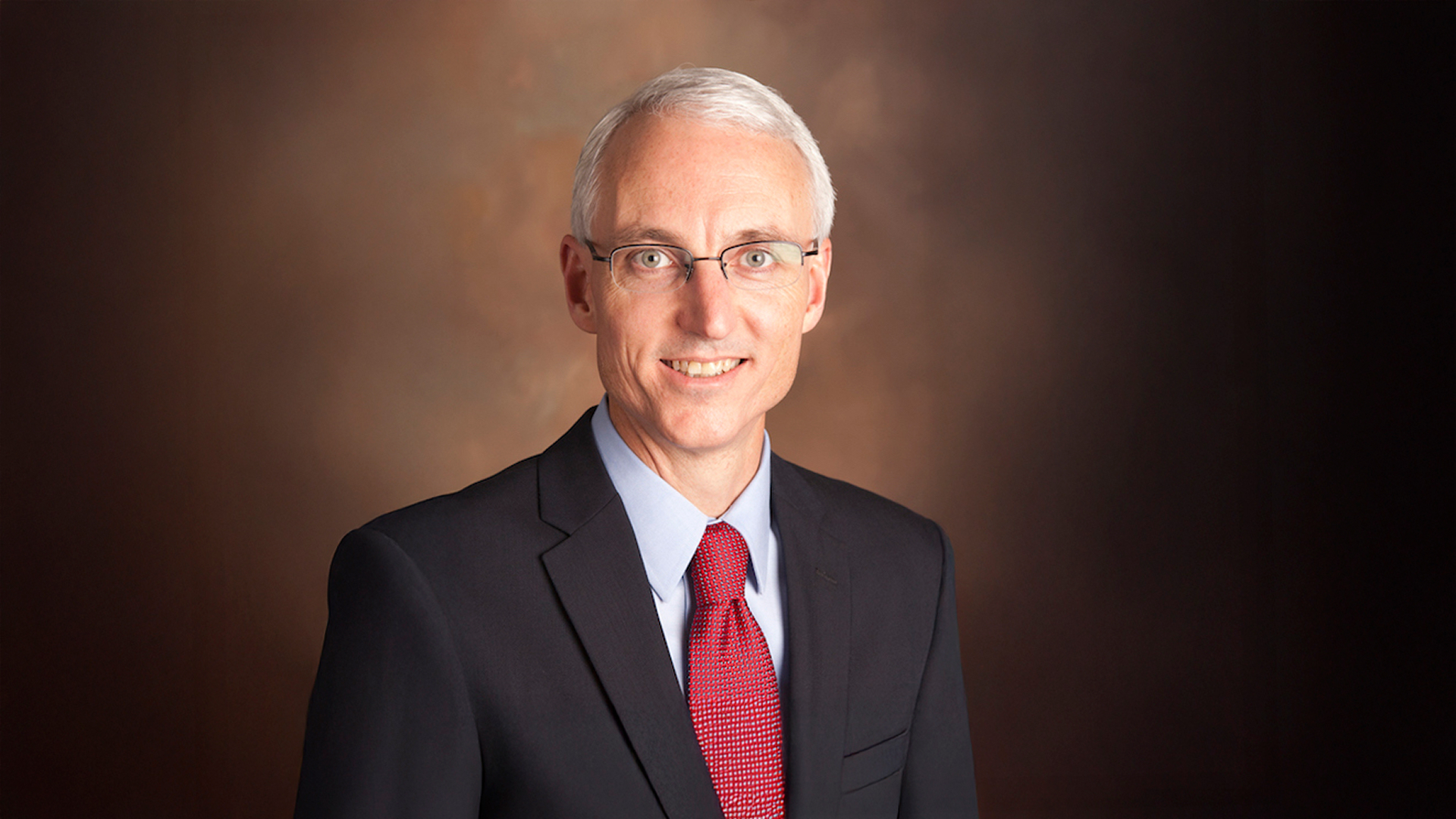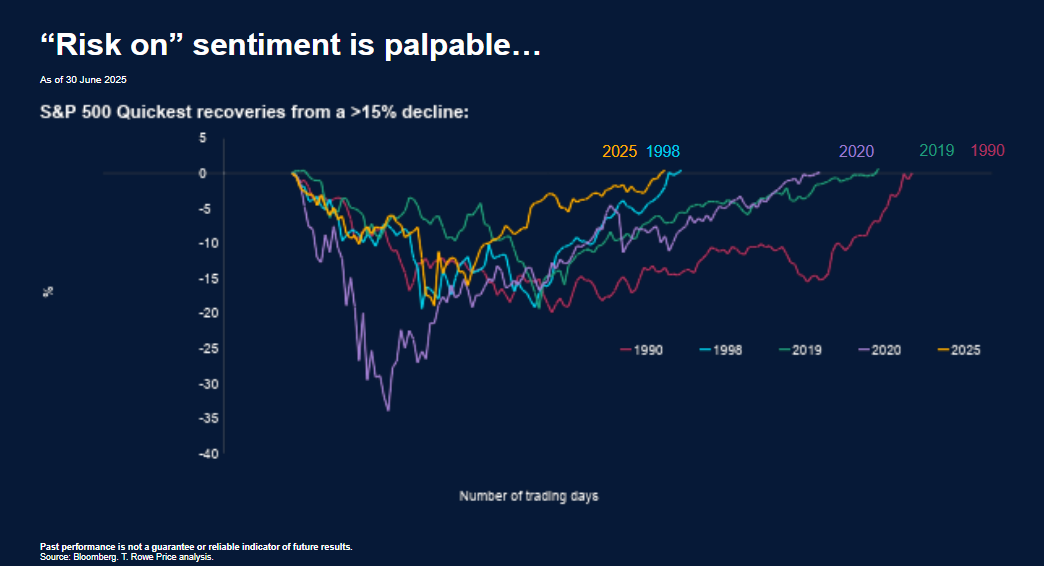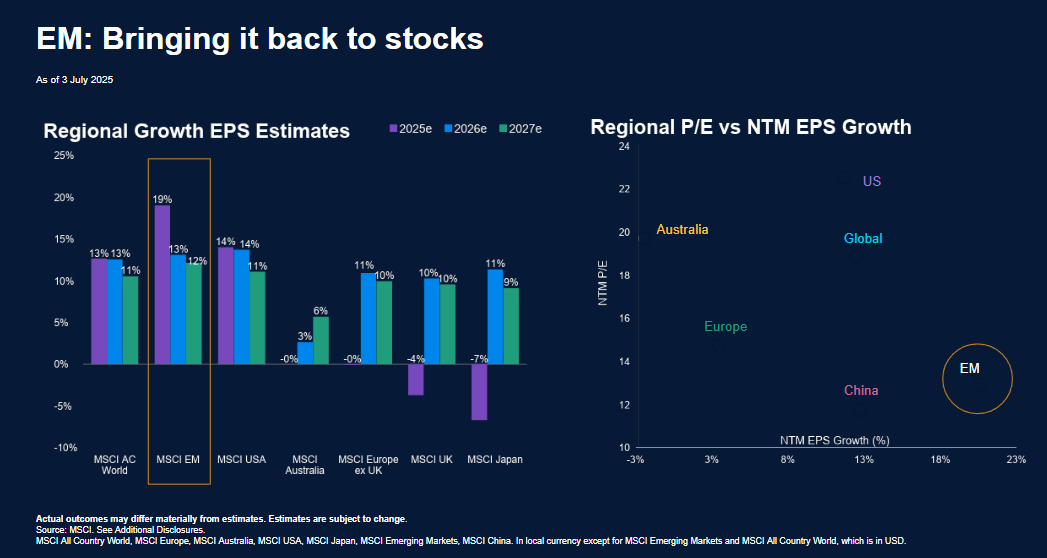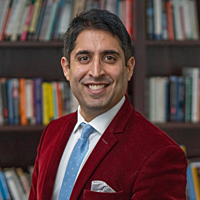Resilience, rotation, and real opportunity: Scott Berg’s global market roadmap
As most Livewire readers know, the first half of 2025 has been anything but dull. Markets are riding high, but investors have plenty to worry about - from tariffs and Trump’s unpredictability to stretched valuations in the context of explosive AI spending.
Yet despite the noise, Scott Berg, Portfolio Manager for T. Rowe Price's Global Growth Equity Strategy, still sees the glass as more than half full.
“So many weird, strange headlines, so much uncertainty — and yet, through it all, there’s been far more market positivity than negativity," he says.
At a webinar moderated by Sam Ruiz, Portfolio Specialist in T. Rowe Price’s International Equity Division, Berg discussed where his January optimism has held up, what’s shifted, and how he’s positioning for the road ahead.
.jpg)
Volatility aside, 2025 has so far exceeded expectations
At the start of this year, Berg predicted:
- Markets would likely rise again in 2025 after two stellar years, albeit by closer to 10% than 20%.
- Volatility would be higher, given a Trump victory meant “a vote for dramatic change.”
- The positives - economic resilience, earnings growth, AI momentum, US business optimism - would outweigh the negatives.
Mid-year, Berg says his January call has largely held up, with the key pillars of his outlook still in place:
- A recession is still unlikely — “It wasn’t true the whole way along, but we’re back to recession unlikely.”
- Earnings took only a modest hit — global consensus growth has only slipped slightly to ~7–9%, with Europe and EM outpacing the US.
- AI momentum remains intact — after early setbacks (DeepSeek, NVIDIA chip delays, China export restrictions), spending is now “even bigger than anyone thought at the start of the year.”
- Investor sentiment entrenched — despite tariff worries, “even most of the corporates would now say broadly for all the Trump chaos, the notion of him being business friendly, market friendly, growth friendly is true.”
“It shows me how strong the US economy really was at the start of the year that it could absorb all this chaos.”
It’s these offsetting forces that have driven the S&P 500’s fastest-ever rebound from a drop of more than 15%, a remarkable feat that, as shown below, is underpinning bullish sentiment across the market.

Tariffs vs positive factors
While investors often place too much weight on negative headlines, Berg says it’s important to balance these against the immensely powerful factors that markets are already recognising and pricing in.
The negative: US effective tariff rate has jumped from ~2% of US GDP to 15.5%, the highest since before WWII. “Make no mistake. To me, tariffs are going to have a slowing effect," he says, noting that the US growth outlook has been reduced from 2.5% to 1.5% this year, and from 2% to 1.5% in 2026.
The positive: the surprise passage of the so-called “big beautiful bill,” locking in US deficits of ~6–7% for Trump’s term. “In the near term, it’s incredibly stimulative… in the here and now it’s pretty [good]. Medium-term, there’s a cost, but that wasn’t clear even in June that it would get passed.”
“The big beautiful bill, deregulation and AI are offsetting what is a legitimate negative of tariffs.”
Market dynamics: Bubbles in pockets
While equities are powering ahead, Berg says navigating markets remains tricky, with pockets of overvaluation and bouts of outright ‘meme stock’ trading.
As such, he’s wary of chasing growth at any price - and one name raising eyebrows for him is Palantir (NASDAQ: PLTR). In a remarkably short time, the AI-powered data mining firm has rocketed to a market cap approaching US$500 billion, delivering knockout earnings recently - with its share price surging from just US$29 a year ago to US$186 today.
But Berg was blunt:
“Palantir is a real company - they just reported gangbuster revenues - but the problem is it’s valued at more than 100 times revenue. That just does not make sense in any normal historical framework and normally ends badly.”
Selective conviction in AI
Berg says he’s positioning the T. Rowe Price Global Equity Fund I to capture growth from the AI boom at reasonable prices, steering clear of the frothiest names that could ultimately blow up. He’s focusing on three core AI sub-themes:
- Picks and shovels — the hardware and equipment that power AI data centres, from advanced chips to cooling systems.
- The cloud — the digital infrastructure and software platforms that host, process, and deliver AI capabilities to users.
- Applications — end-user products and services that integrate AI to enhance functionality, from business analytics tools to consumer apps.
"Despite the potential DeepSeek disruption, all the capex estimates have gone up," he says.

Within the Magnificent 7 Berg remains very active. He is overweight Microsoft (NASDAQ: MSFT), Meta, NVIDIA (NASDAQ: NVDA) and Amazon (NASDAQ: AMZN), and more underweight Tesla (NASDAQ: TSLA) than he’s ever been. He’s also underweight both Google and Apple. On Tesla, Berg didn’t hold back:
“It’s going to have its third year of -20% earnings growth… its second year of no revenue growth… earnings are less than half of what they were three years ago and still going down - and it trades at 120 times earnings," he says.Ex-AI themes Berg is backing
Outside of AI, the fund has been positioned to take advantage of the market broadening beyond AI, increasing exposures in pockets like European banks and other sectors.
Berg also has strong conviction in emerging markets, investing in undervalued regions such as China, Argentina, and Saudi Arabia. He notes that the EM asset class is in a “sweet spot” for both earnings growth and valuations - as illustrated in the chart below.
“We’ve put risk back on, but in areas we can value sensibly and where fundamentals are real.”
EM: offering compelling relative value with strong growth prospects

Beyond AI, Berg currently sees several areas with strong fundamentals:
- Financials – Charles Schwab (NASDAQ: SCHW) and Bank of America (NYSE: BAC) benefiting from higher-for-longer rates; alternative asset managers such as KKR (NYSE: KKR); and fintech uplift from Trump’s financial deregulation push (Block, NYSE: SQ; Futu Holdings, NASDAQ: FUTU).
- Healthcare – innovators like Intuitive Surgical (NASDAQ: ISRG), and Stryker (NASDAQ: SYK), while avoiding US healthcare services facing structural headwinds.
- Industrials – AI-driven efficiency plays Schneider Electric (EPA: SU), Siemens (ETR: SIE), Hubbell (NASDAQ: HUBB), and the aerospace boom via Airbus (EPA: AIR), Boeing (NASDAQ: BA), and General Electric (NASDAQ: GE).
- Materials – constructive on copper, US/Vietnam steel, and decarbonisation-linked commodities.
A word on performance
While acknowledging the fund’s relative underperformance versus the index over the past year (14.3% vs 18.3% gross at 30 June 2025), Berg points to its longer-term record — delivering around 13.5% (gross) annually over the past decade, compared to 11.8% for the index.
Ultimately, Berg’s philosophy is to generate growth while protecting investors’ capital. If that means steering clear of extremely overvalued names like Palantir and missing the occasional meme trade, so be it. He’s confident the strategy can remain consistent and resilient over the long term without taking excessive risk.
“We want to preserve and grow wealth meaningfully over time - that’s our north star," he says.
.png)
Views as of 6 August 2025
4 topics
15 stocks mentioned
1 fund mentioned
1 contributor mentioned

